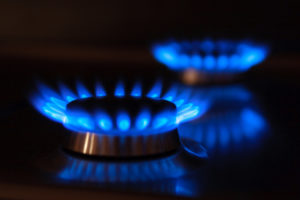 Natural gas rose on Friday and headed for a sizable weekly gain as the north-eastern US braced for a strong cold blast that would induce a period of stronger heating demand. Gains, however, were limited as the rest of the US remains near-seasonal or slightly warmer.
Natural gas rose on Friday and headed for a sizable weekly gain as the north-eastern US braced for a strong cold blast that would induce a period of stronger heating demand. Gains, however, were limited as the rest of the US remains near-seasonal or slightly warmer.
Natural gas for delivery in April traded 0.92% higher at $2.839 per million British thermal units at 10:00 GMT, shifting in a daily range between $2.839 and $2.819. The energy source fell nearly 3.7% on Thursday to $2.813 after the Energy Information Administration reported an inventory withdrawal below average estimates.
EIA data showed that US natural gas stockpiles fell by 45 billion cubic feet in the week ended March 13th, matching the five-year average drop but falling short of analysts median estimate of -48 bcf.
Total gas held in US storage hubs amounted to 1.467 trillion cubic feet, 13.3% below the five-year average inventory level of 1.692 trillion and 52.8% above the year-ago stockpiles at 960 trillion cubic feet.
The lower-than-expected withdrawal failed to reverse weekly movement as the market continued to draw support on Friday ahead of an upcoming cold blast across the North and East, but its limited reach kept longer-term sentiment biased to the downside.
According to NatGasWeather.com, natural gas demand in the US will be low-to-moderate, compared to normal, through March 26th, with a somewhat warmer weather trend for the West over the following seven days, while the East sees a slight cooling in conditions.
A stalled weather system tracking through Texas will bring showers today and over the next few days, but temperatures will remain seasonal. A weather system will also move through the East Coast, carrying lower temperatures and snow accumulations across the Northeast. A strong cold blast will impact the northern US this weekend, sending overnight lows across the Midwest and Northeast into the teens and low 20s, and below 10 degrees near the Canadian border. The cold front will induce stronger heating demand for its duration, but warmer weather will be swift to return on Monday into Tuesday, while the rest of the US continues to experience mostly seasonal or slightly higher temperatures.
As next week progresses, weather systems tracking across the northern US will bring rain, snow and slightly below-normal temperatures to the Great Lakes and East, while the West remains mainly warm and dry. The central and eastern US also haven’t seen changes from recent forecasts that have been calling for near-normal conditions, with active weather systems passing through.
It will be important to monitor a strong cold blast moving across Canada around March 30th, as it may develop in many ways, although it stands a greater chance of delivering only a quick blast of moderately cold air.
Inventory build
Next weeks supply report by the EIA will likely register a small inventory build as the reach of this past Tuesday’s cold blast was limited to the Northeast and the rest of the US continued to enjoy mostly seasonal weather. The five-year average withdrawal for the week ended March 20th is 19 billion cubic feet, while the year-ago storage drop was -56 bcf.
The following report, due on April 2nd, may reflect a near-average or slightly thinner inventory decline, depending on how this weekend’s cold blast plays out and for how long it persists. The five-year average withdrawal for the week ending March 27th is -22 bcf, while gas in storage declined by 71 bcf a year ago. In any case, inventories are unlikely to gain much ground on deficits over the next three supply reports as cold Canadian air lurks across the border.
Readings
According to AccuWeather.com, highs in New York will peak at 38 degrees Fahrenheit today, 13 below usual, before jumping to the near-seasonal 50 degrees on March 25th. Chicago will experience seasonal weather tomorrow at 30-49 degrees, but will afterwards turn somewhat cooler through the rest of the month.
Down South, the mercury in Houston will peak in the 70s throughout March, hovering near the average 73-76 degrees. On the West Coast, highs in Los Angeles will range in the mid and upper 70s through March 25th, above the normal 70-71, before jumping into the 80s the following four days.
Pivots
According to Binary Tribune’s daily analysis, April natural gas futures’ central pivot point stands at $2.839. In case the contract penetrates the first resistance level at $2.902 per million British thermal units, it will encounter next resistance at $2.991.
If breached, upside movement may attempt to advance to $3.054 per mBtu. If the energy source drops below its S1 level at $2.750 per mBtu, it will next see support at $2.687. If the second key support zone is breached, the power-station fuel’s downward movement may extend to $2.598 per mBtu.
In weekly terms, the central pivot point is at $2.751. The three key resistance levels are as follows: R1 – $2.840, R2 – $2.953, R3 – $3.042. The three key support levels are: S1 – $2.638, S2 – $2.549, S3 – $2.436.





